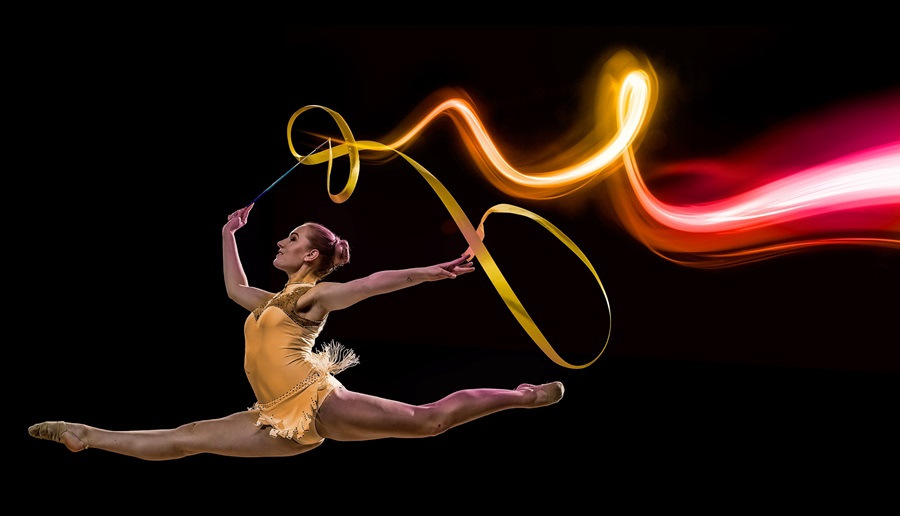So, in such a competitive search landscape, how do you break away from the noise? How do you reach your audience and connect with them in meaningful and memorable ways?
Humans love visual content.
Visuals – whether they’re photographs, illustrations, videos, motion graphics or infographics - are up to 650% more engaging than text alone . What’s more, 80-85% of our perceptions, learnings, cognitions, and activities are mediated through vision . So, it’s safe to assume that visuals are fairly important when it comes to engaging audiences.
Search engines are constantly evolving to make our search experience seamless and intuitive, and already, Google has started to incorporate more visuals into their search results pages. For example, they recently added image results to Google Translate, live updating the results page with image assets when text is added to the translatable field. You can also now enjoy VR search results for select terms: search “chow chow” for a fluffy surprise!
In fact, Google’s latest algorithm update is set to favour ‘helpful content’ that really leads to a positive user experience, so there are many reasons why visuals can already have a positive impact on content rankings and performance:
1. Visuals provide value to readers.
Alternative formats are essential for good Accessibility scores and better user experience. Adding images signals to Google that your content is useful and relevant to readers.
2. They help Google to diversify the results page.
According to Search Engine Watch, Google prioritises content with visuals , especially when it comes to rich snippets. If you want to rank on Google’s Discover page, your content must have visuals.
3. Visuals can improve time on site and engagement, and lower bounce rates.
A study conducted by Moz showed that higher dwell time correlates with better rankings. Also, Google’s AI algorithm RankBrain is likely to analyse and prioritise content based on user experience, i.e., engagement and time on page.
4. Visuals attract high-quality links and social shares.
Creating engaging and useful visual content can entice more users to link to your content or share it on social media, thus strengthening your backlink profile and increasing traffic to your site via social channels.
See, visuals already impact search results – but with intuitive updates in sight, their significance only increases. It’s just a matter of time before Google’s algorithm will comprehend and interpret visuals with the same level of accuracy that it currently reads text.
So, what next? What does this mean for your content and SEO strategy?
Ultimately, to tell compelling stories that get noticed – by search engines and people – your content needs bespoke, impactful visuals. Not only do these visuals need to be engaging, inspiring and creative, but it’s also vital that they are informed by human interests, passions, and behaviours:
- What does your audience want? What are they searching for?
- How will you unlock these insights to meet the needs of your consumers?
- Do you have the tools to stand out and make an impact in search?
Kantar’s 3 best practices for using visuals to improve search performance
Follow Kantar Digital Content’s advice for using visuals to improve search performance:
1.Optimise high-performing articles
For better results, focus on low effort–high gain approaches:
- Optimise existing topics with high interest and low competition, timing the updates around peaks in search interest.
- If creating new content, wait and see how well it performs before optimising with visuals to enhance user experience.
- Create illustrated GIFs without text so that they’re easy to localise across markets.
- Invest in textual and technical optimisations before visuals.
2. Conduct a quality audit of visual optimisations
As well as always checking for errors in publication like incorrect formatting and faulty video performance, it’s important to also consider how your visuals are optimised for page experience:
- Core Web Vitals: Whilst you may still rank well with high-quality content and below-average page experience, to truly maximise results, both high-quality content and good page experience are necessary. Test your webpage to find out how it stacks up against Google’s measure of user experience here.
- Alt text: Used to describe an image to search engines and visually impaired web visitors, alt text is vital for accessibility, optimisation, and compliance with Priority 1 WCAG standards.
- Schema markup: Also known as structured data, schema markup is the language of search engines, using a unique semantic vocabulary. Whilst not a ranking factor alone, schema markup can result in users interacting more with your site and is crucial for rich result optimisation – test your pages using this Google tool.
3. Focus on articles targeting your brand’s key topics
Whether you’re a global fast-food company, skincare brand or drinks supplier, your top-performing content will focus on your brand’s target areas. Identify your target audience and create visuals that answer consumer questions and improve user experience.
The winning formula: Visual Content Strategy powered by Search Optimisation Science
With these insights in mind, the Digital Content experts at Kantar worked with Essity to enrich more than 200 pages of content with bespoke visual assets across the company’s consumer tissue brand sites. They published across 22 markets throughout Europe, in 16 different languages, creating 230 bespoke illustrations, photographs, animated graphics and videos.
It wasn’t long before:
- Rankings went up, with over 40% of the pages ranking in top 10 positions of results
- Engagement increased, with more than 39% showing a percentage increase in sessions lasting more than 60 seconds and viewing more than half of the page
- A year post-optimisation, articles on the first SERP still saw improved times-on-page and increased scrollable area views
Most of the visually optimised content moved up an average of one whole page in Google search rankings and the content even achieved the top search snippet position for several key terms.
In a search landscape that is constantly evolving, traditional SEO techniques are no longer enough. Combining unique creative production capabilities with technical SEO science is the only way to craft compelling, engaging and informative digital content that consumers want to see.
While outcomes will likely vary depending on market and brand, these learnings from Essity’s visual optimisation campaign offer an exciting insight into the emerging best practices for search-optimised visuals that every brand can embrace.
Trust Kantar Digital Content’s winning formula to elevate your webpages. Reach out to the team to discover how combining bespoke visuals with SEO expertise could improve your brand’s search performance.

